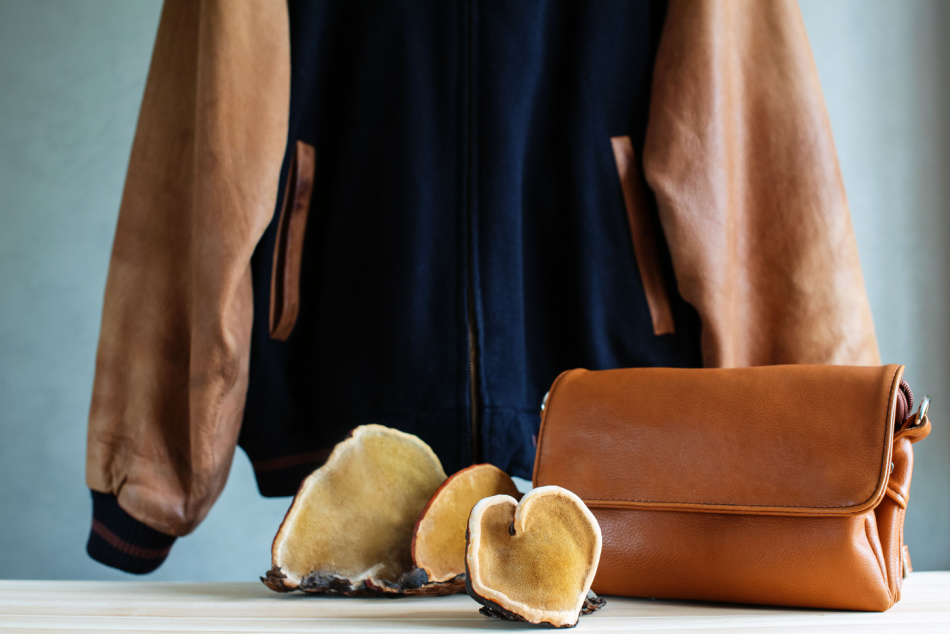The environmental impact of the fashion industry has become an increasing worry in a society where fast fashion has been the standard. But there is good news! Three biotechnologists based in the UK have created a new type of self-healing leather derived from mycelium, the vegetative component of a fungus, which has the potential to change the way we think about sustainable design.
Biodegradable and self-healing
Elise Elsacker and Martyn Dade-Robertson of Newcastle University, in partnership with Meng Zhang of Northumbria University, have tapped into one of the most intriguing qualities of mycelium: its ability to self-heal.
The trio published a paper titled “Fungal Engineered Living Materials: The Viability of Pure Mycelium Materials with Self-Healing Functionalities”. In the paper, the authors wrote: “In this study, pure mycelium materials are fabricated for use as leather substitutes, and it is found that chlamydospores, thick-walled vegetative cells formed at the hyphal tip, might be the key to the material’s self-healing properties. The results suggest that mycelium materials can survive in dry and oligotrophic environments, and self-healing is possible with minimal intervention after a two-day recovery period.”
Phys.org reported that large, tangled masses of interconnecting mycelium branches may form in fungal colonies, usually underground. Earlier studies discovered that these structures may be processed and turned into mycelium leather.
The treatments used in this procedure, however, have a tendency to harm regenerating nodules known as chlamydospores. The researchers set out to modify the mechanism in order to prevent destroying the chlamydospores and allow the material to self-heal in the correct environment.
In the lab, the scientists mixed live chlamydospores with a watery mixture of proteins, carbohydrates, and nutrients to create mycelium. The researchers removed the thick skin that had formed on top of their batch of liquid and laid it aside to dry.
They employed a variety of temperatures and chemicals during the drying process to allow the mycelium material to become leathery while keeping its chlamydospores. As a result, the material was of comparable quality and appearance to previous mycelium leathers.
The researchers drilled holes in the leather and placed it in a vat of the liquid used to produce it to evaluate its healing properties. When the mycelium leather was taken from the liquid and allowed to dry, the chlamydospores filled in the holes, restoring it to the same strength as the scientists’ control sample — albeit with scars.
Traditional leather is easily damaged and requires costly repairs, but mycelium leather can mend itself, which means it lasts longer and is less expensive. Furthermore, unlike traditional leather, which can take years to decompose, mycelium leather is biodegradable. This implies that mycelium leather will not add to our planet’s ever-growing landfills and waste management challenges.
A long-term solution
Traditional leather production necessitates significant amounts of water and energy, as well as the use of hazardous compounds such as chromium. Mycelium leather, on the other hand, can be made with substantially less water and energy, as well as without the use of toxic chemicals. Furthermore, mycelium leather can be grown in a matter of weeks rather than the years it takes to raise a cow for leather. As a result, mycelium leather has a substantially lower carbon footprint than regular leather, making it a more sustainable option for the fashion industry.
A multipurpose material
Mycelium leather is not only eco-friendly but also extremely adaptable. It can be used to make a variety of items such as clothing, accessories, and furniture. Mycelium leather’s texture and look can also be altered to mimic classic leather or to produce new and inventive patterns. Mycelium leather has already been used to make a variety of things such as purses, shoes, and even car seats!
Finally, mycelium leather has the potential to transform the fashion industry by making it more sustainable, cost-effective, and environmentally friendly. Mycelium leather, with its self-healing and biodegradable characteristics, as well as its adaptability, could be the future of sustainable fashion. So, the next time you’re looking for a new accessory or piece of clothing, consider mycelium leather for a sustainable and fashionable option!
We are highlighting this piece as part of our annual “Best Of” roundup of articles published at The Optimist Daily this year. Today’s focus is on the top Science solutions of 2023.












